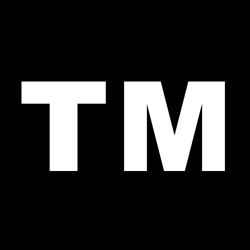
TTAB Sustains Opposition Based on Reputation Without Use in the United States
TTAB sustains opposition based on reputation without use in the United States
UNITED STATES OF AMERICA Legal updates: case law analysis and intelligence
The opponent, owner of Venezuelan company La Montserratina, opposed an application for LA MONTESERRATINA in Class 29.
The TTAB found that the opponent had provided evidence of actual confusion in the United States, demonstrating its reputation in the LA MONTSERRATINA mark. The opponent fell within the zone of interests protected by the opposition statute and had demonstrated proximate causation.
In Plumrose Holding Ltd v. USA Ham LLC (Opposition No 91272970), the Trademark Trial and Appeal Board (TTAB) has sustained an opposition filed by Plumrose Holding Ltd (‘the opponent’) against a trademark application by USA Ham LLC (‘the applicant’). The TTAB determined that the opponent had standing to contest the application, despite not having sold products under the mark in the United States.
Background:
The applicant, a US-based company, applied to register the mark LA MONTSERRATINA in Class 29 for various packaged meat
products and the opponent owns a Venezuelan company called La Montserratina CA, which has used the LA MONTESERRATINA mark since 1949.
The opponent argued its use of the mark had generated a reputation for superior quality in Venezuela and among Venezuelans in the United States and cited its 2021 US trademark applications as evidence of plans to enter the US market.
The opponent alleged that the application violated Section 14(3) of the Lanham Act. The opponent further contended that the applicant sought to benefit from the goodwill of the mark, thus damaging its reputation among US consumers. The TTAB held an oral hearing on 13 November 2024 and sustained the opposition.
Decision:
To establish standing, the opponent had to demonstrate:
1. an interest falling within the zone of interest; and
2. a reasonable belief in damage proximately caused by the registration of the applicant’s mark.
The opponent based its allegations on the damage to the reputation of its LA MONTSERRATINA brand in the United States. The TTAB distinguished the decision in Meenaxi Enterprise Inc v Coca-Cola Co (38 F4th 1067 (Fed Cir 2022)), where an Indian company failed to show any supporting evidence of its US reputation. Here, the opponent provided evidence of actual confusion by customers and inquiries regarding its products in the United States, demonstrating the opponent’s reputation in its LA MONTSERRATINA mark. The TTAB determined that this evidence was persuasive because the low sales and low market share of the applicant’s LA MONTSERRATINA products did not establish the applicant’s reputation for using the mark.
Further distinguishing the present opposition from Meenaxi, the applicant had copied the opponent by adopting an identical typeface and layout for both iterations of its composite mark, which the TTAB concluded could not be coincidental. The applicant had also adopted packaging that was difficult to differentiate from the opponent’s, and the TTAB determined that the addition of the USA HAM logo on the applicant’s packaging could not mitigate this confusion. Notably, the applicant admitted familiarity with the opponent’s mark and marketed its products to Venezuelan-affiliated stores, reinforcing deliberate copying. The TTAB rejected the applicant’s arguments that the opponent was not reputationally harmed due to lack of negative customer experiences and also rejected its argument that the opponent “nebulously” planned to enter the US market.
The TTAB concluded that these instances pointed to clear and calculated copying in an attempt to capitalise on the opponent’s reputation. Further, the TTAB found that the applicant’s use of that mark “hijack[ed] control of [the opponent’s] reputation”, thus falling within the zone of interest protected by the opposition statute, and that the opponent had demonstrated the proximate causation necessary, thus meeting the requirements of Section 14(3).
Beyond reputational harm, the TTAB considered the potential impact on the opponent’s own trademark applications. If the applicant’s mark were registered first, the opponent’s applications could face rejection due to a likelihood of confusion. This commercial interest further supported the opponent’s claim of proximate causation – that the registration would directly harm its business.
Turning to the merits of the claim under Section 14(3), the TTAB found that the opponent satisfied all elements required for a successful opposition:
1. It was undisputed that the applicant used the challenged mark;
2. The applicant’s copying conduct was deliberately aimed at passing off its goods as those of the opponent; and
3. The damage to the opponent’s reputation, and the blocking of its pending applications, demonstrated an injury resulting from the applicant’s conduct.
Comment:
This precedential decision may strengthen protection for brands with established use outside the United States and reputation within the United States, even though goods or services under those brands have not yet been sold in the United States.
Copyright © Law Business Research
Company Number: 03281866 VAT: GB 160 7529 10
Dennis Prahl – Partner
Ladas & Parry LLP
dprahl@ladas.com
View full biography
Ravindra Persaud
Ladas & Parry LLP
rpersaud@ladas.com
View full biography
Olivia Dinkins
Ladas & Parry LLP